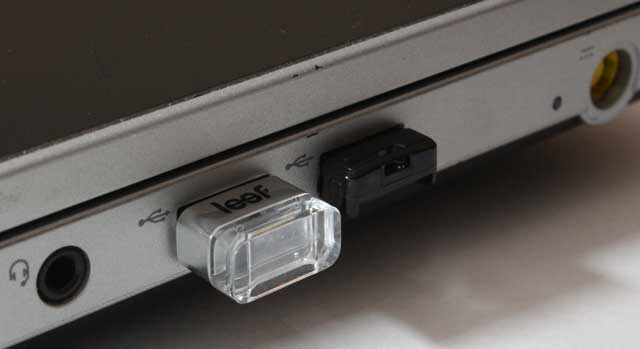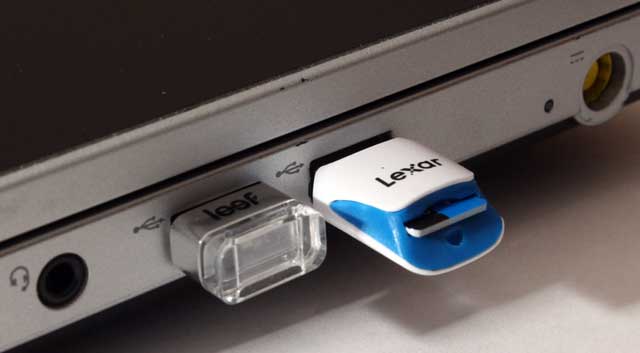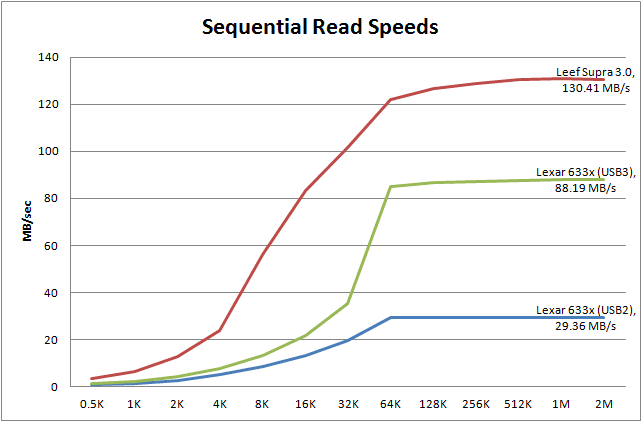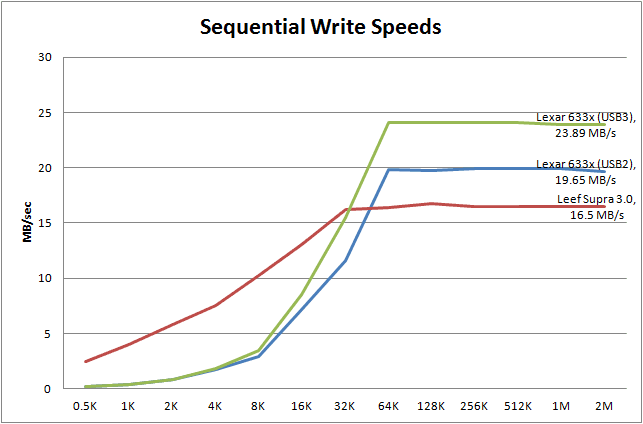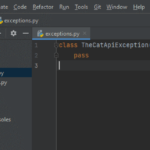When reviewing the Top 16GB USB flash drives under $20 of 2014, it was observed that the ever-tiny Leef Supra 3.0 was surprisingly fast for such a small thing. This warranted a closer comparison to something like a Lexar 633x MicroSDHC card (with USB 3.0 Lexar reader) which was a tad larger, but overall, pretty close to the same size. In addition to this, a generic USB 2.0 MicroSD card reader was thrown in for contrast.
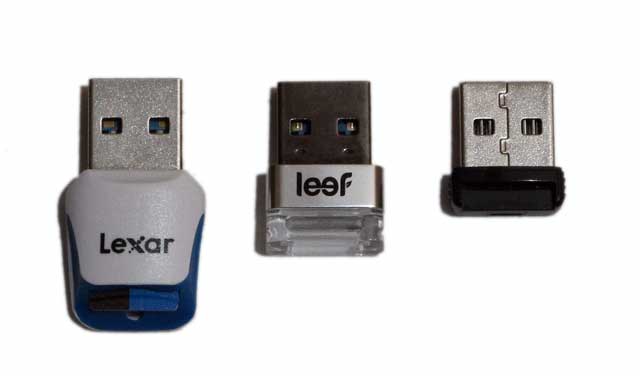
The nagging question was “How does the Leef stack up to the competition?”
How they stack up
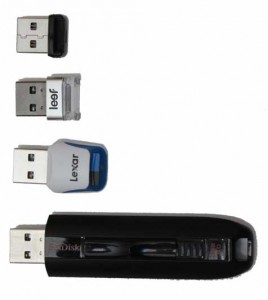
Looking at the 3 USB drives side-by-side, the Leef does not appear as tiny as originally presumed when compared to the generic MicroSD card reader. And the Lexar MicroSD seems positively huge next to the Leef. Though, when compared to the blazing fast SanDisk Extreme USB flash drive, well, they all seem pretty small again.
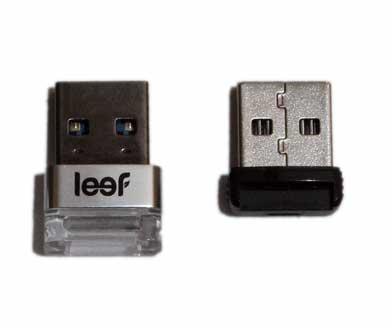 A closer look reveals that the Leef *could* be as small as the generic MicroSD card reader if it didn’t have the clear plastic bezel attached to the end. In fact, without it, they would be nearly the same size.
A closer look reveals that the Leef *could* be as small as the generic MicroSD card reader if it didn’t have the clear plastic bezel attached to the end. In fact, without it, they would be nearly the same size.
When plugged into the side of a laptop, both the Leef and the USB 2.0 MicroSD card reader seem right at home and are completely unobtrusive. The Lexar is a little less so.
The generic MicroSD reader tries to be the “best of all worlds” where it is not only small, but allows the user to swap in and out little MicroSDHC and MicroSDXC cards as needed. The Lexar tries this trick as well, but seems to be a bit larger for reasons unknown. Presumably, the Lexar reader is larger because the USB 3.0 circuitry requires more space than the generic MicroSD card reader’s USB 2.0 interface. But who knows if this is really the case…
How they perform
Looking back at the “Best USB 3.0 Flash drives for under $20” review, it was observed that the Leef Supra 3.0 is both a decent value as well as a solid performer.
A quick look at the sequential read speed chart reveals that the Leef Supra 3.0 (130MB/s) is a clear read speed winner over the Lexar 633x (88MB/s). It’s nearly 1.5x faster than the Lexar in the USB3 reader and 4.3x faster than the USB2 reader (29MB/s).
Looking at the sequential write speeds is a different story, though.
The Leef starts off stronger at the smaller block sizes (from 512 bytes up to 32K), but the Lexar MicroSD card surpasses the Leef at the 64K block size immediately. In the USB3 reader, the Lexar card is almost 50% faster than the Leef at writing (24MB/s vs. 16.5MB/s). Even the Lexar card in the USB2 reader is still 20% faster than the Leef.
Why does the Leef outperform the MicroSD card on Read Speed?
It turns out that the maximum throughput rate of any Ultra High Speed (UHS-I) SD card is around 100MB/sec. The Lexar 633x gets close with a top throughput rate of 88MB/sec, but it still will never catch the fastest USB 3.0 Flash drives because it is limited by its own SD card bus.
Interestingly enough, there is a relatively new standard for SD cards (as of 2011) known as UHS-II which supports a top throughput rate of around 300MB/sec, but this standard has additional pins added to the physical card and as such only a few very new cameras and readers can take full advantage of this additional speed. This standard is still very new and the SD cards are much more expensive as well.
Why does the MicroSD card outperform the Leef on Write Speed?
MicroSD cards are designed primarily for media devices (think: cell phones, MP3 players, and cameras.) These devices largely deal with files and data that come in larger chunks (like 64K or larger) and it has to deal with them quickly. On the other hand, a USB flash drive often has to deal with lots of little files and small reads and writes. So a good USB flash drive has to be able to handle both large files as well as small ones with equality.
Tiny USB Flash Drive or MicroSD Card?
Or rather, is the Leef Supra 3.0 a better proposition or is the Lexar reader and MicroSD card a better choice? Well, that depends. Let’s look at the Pros and Cons:
| Leef Supra USB 3.0 (16GB) | Lexar 633x MicroSDHC (16GB) | |
| Pros |
|
|
| Cons |
|
|
| Cost | $15.99 | $21.95 |
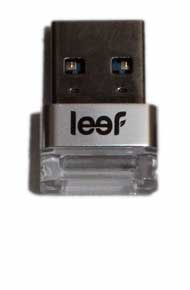 |
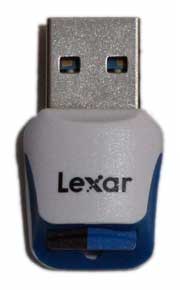 |
Tough choices…
On one hand, there’s the tiny Leef Supra 3.0 with its blazing read speed. On the other hand, there’s the rather small Lexar USB 3.0 reader with its peppy, but balanced MicroSD card. Both are worthy drives for moving data around.
How to break this tie?
It seems to come down to whether the extra read speed of the Leef Supra is more important than the flexibility of being able to swap out MicroSD cards between camera, Android cell phone or Tablet, and MP3 player.
And ultimately that comes down to personal preference. So which one do you prefer?
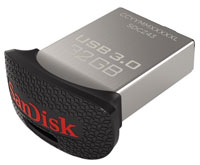 UPDATE 25-SEPT-2014: The SanDisk Ultra Fit USB 3.0 drive is out! Read-on to find out how well the SanDisk Ultra Fit compares versus the Leef Supra 3.0.
UPDATE 25-SEPT-2014: The SanDisk Ultra Fit USB 3.0 drive is out! Read-on to find out how well the SanDisk Ultra Fit compares versus the Leef Supra 3.0.
